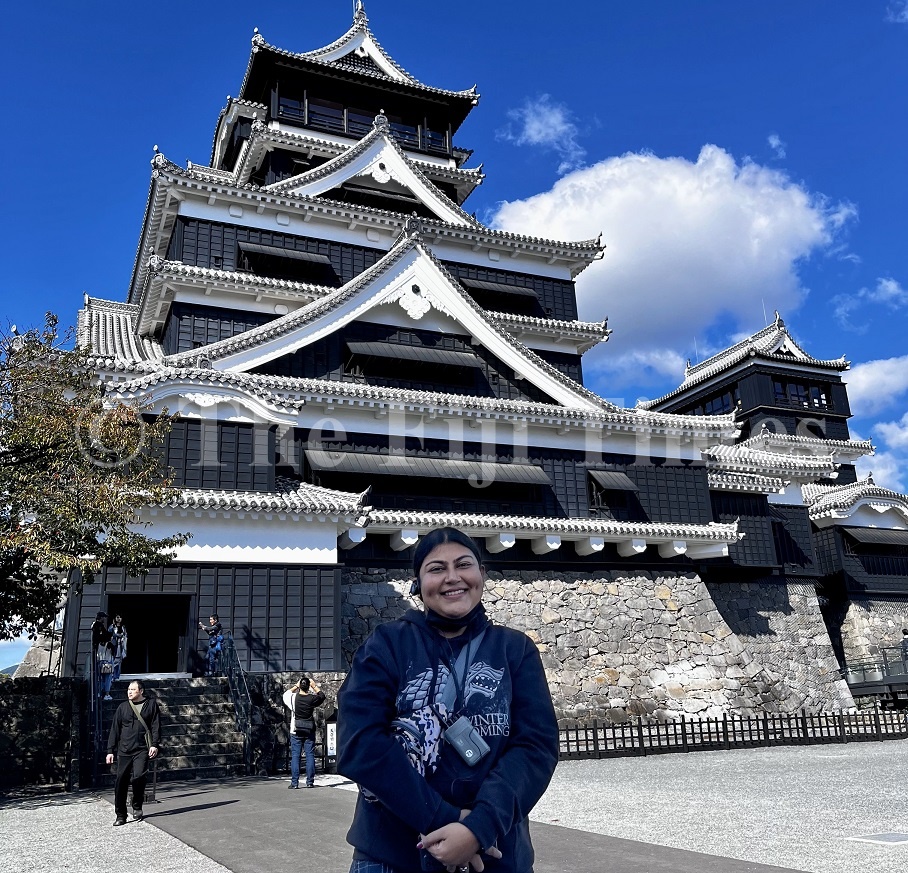Amid the glitz and glamour of Tokyo, entertainment in Osaka and historical charm of Kyoto, other destinations in Japan often tend to be sidelined.
However, when I learnt that Kumamoto was among the places we would visit, the spark of excitement was too difficult to contain.
You see, Kumamoto is the home prefecture of my favourite mangaka, Eiichiro Oda — the creator of One Piece. If you’re an anime fan, you won’t be a stranger to this spectacular show, which has been on the air since 1997.
Carrying themes of friendship, struggle, camaraderie, and freedom, it’s no wonder that this is one of the most beloved anime and/or manga globally.
Now, you might be reading this and wondering, “why the sudden explosion of geekiness about an animation?”
Well, it’s because the tale I’m about to weave for you is nothing short of inspirational. Last week, I wrote about the flooding disaster that nearly crippled Kumamoto.
The earthquakes claimed the lives of about 273 people and destroyed over 200,000 buildings and transport infrastructure. But prior to that, a series of powerful earthquakes battered the region, causing widespread destruction.
It slowed down economic activity, to the point where many businesses had to step back and reassess the way forward.
Kumamoto was once a thriving tourist destination for scores of visitors, eager to take in panoramic views of its mountain valleys, extraordinary hot springs and famed shochu.
Yet, after the natural calamities and onset of COVID, it soon became clear that “business as usual” would take a while to return.
To see for ourselves the reality on the ground, we visited the Kumamoto Earthquake Disaster Museum KIOKU in Minamiaso Village, Aso, Kumamoto.
Here, we met Takayuki Kubo, museum director and strategy manager for the village’s tourism organisation.

The museum features three exhibit rooms where visitors can see videos of the disaster, objects that were damaged, how the tragedy impacted the region and the lessons learnt.
The museum stretches on the former site of Tokai University’s Aso Campus.
On the day, journalists also braved the cold and rainy conditions to hike up to the site of the former university, which still bears the tragic scars of the 2016 disaster.
The buildings have been retrofitted with beams to protect against further damage in the event of another quake.
However, most of the damage is quite visible.
“Aso was a very popular tourist destination, so annually, we had about seven million visitors and after the earthquake, it reduced to half,” Mr Kubo informed the journalists.
“There were big groups coming and now, we have a lot of individual travellers.
So, we don’t rebuild the same facility with the same mind. We should be more forward-thinking and build something that is suited to the current trends.”
He now hopes the museum can play a role in Kumamoto’s recovery, as the facility has the scope to become an educational source of information, where people from both Japan and overseas can learn more about earthquakes.

But there is another curious addition to the museum that hopes to attract a different niche – anime fans.
As I mentioned earlier, One Piece author Eiichiro Oda is from Kumamoto, and after the earthquakes, sought a way to help boost recovery efforts.
The ‘One Piece Kumamoto Revival Project’ is his brainchild, which was subsequently taken on board by different municipalities within the prefecture.
Ten statues of all 10 Mugiwara pirates are spread across the prefecture. At the museum, a statue of archaeologist Nico Robin has been erected.
And Mr Kubo told us that people may even come to the museum for the One Piece statue, which makes it a worthwhile visit for even those who are not interested in earthquakes.
“It is a combination of education, tourism and collaboration.”
After this visit concluded, we were informed our trip to the region would be incomplete without visiting the iconic Kumamoto Castle, which towers over the main city. We donned comfortable walking shoes so that we could see the castle in all its glory.
Our guide informed us about the castle’s history, which spans back to 1607. It was constructed by the first daimyo (feudal lord) of the castle, Kato Kiyomasa.
And for centuries afterwards, Kumamoto Castle has become an incredible example of sophisticated engineering, and a feat of architecture that was truly ahead of its time.
Kumamoto Castle also suffered extensive damage to its outer walls and infrastructure during the 2016 earthquakes, and the rebuilding efforts have borne fruit for the prefecture. Today, the castle grounds are among the most visited tourist attractions in the prefecture.

The main castle has about six floors, and the top – a viewing deck – where visitors can take pictures of the city.
For us, we only had about 10 minutes to reach the top, snap our pictures, and return to our guide. With the elevator accessible only for priority use (for the elderly, disabled, pregnant or injured), we really tested the strength of our legs, occasionally stopping to catch our breath along the way.
And just like that, our short trip to Kumamoto came to an end. As we headed back to Tokyo, I couldn’t help but reflect on our trip to Osaki and Kumamoto, and marvel at the resilience of the common people. It was truly a trip to remember, sore limbs and all!
Next week, I’ll share my experiences of traditional activities in Tokyo, before bidding goodbye to Japan and heading back home.



